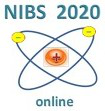Speaker
Description
Steady-state operation mode of a fusion neutron source (FNS) will require plasma heating and maintaining the current in it by fast atoms beam injecting. The DEMO-FNS project [1] assumes the use of six injectors providing additional heating power up to 30 MW at an atomic energy of 500 keV. As a prototype for the DEMO-FNS injector, an injector developed in detail for the ITER project can be used, with the injector layout retained, but changes in individual components, which is caused by the difference in beam energy and power [2]. Inside these components, there are very strict restrictions on the magnetic field magnitude (the flux density should be below a certain value along the path of ion movement and even lower in the neutralization region) [3]. To achieve these characteristics in an environment with a high scattered field due to the magnetic system of the facility, which includes the coils of the poloidal and toroidal fields, the central solenoid and the plasma itself, additional shielding of the injectors is provided. At this stage, we expect that the proposed design will allow obtaining the required magnetic field values only by passive injector(s) shielding due to a case made of a ferromagnetic material with a high magnetic permeability index. An electromagnetic analysis of the effectiveness of such a screen was performed using 3D modeling using the ANSYS code. For this, a computational finite-element model DEMO-FNS was created, which includes a vacuum volume in which an electromagnetic system is located and one of 6 heating injectors. The magnetic field components values on the injection axis were calculated without shielding the injector region. It was shown that the vertical field component Bz in the injector region is maximum and is in the range of 300 G at the input (from the side of the torus) to 150 G at the other end of the shielded case. Variants of single-layer shielding using various materials, and multilayer ones: two-, three- and four-layer with different layer thicknesses and vacuum gaps between them were considered. By choosing the optimal thicknesses of layers and gaps, the projection of the magnetic induction vector on the plane perpendicular to the beam direction was suppressed to acceptable values in the region of the injector components. The BTR code was used to calculate the motion of particles in the conditions of the obtained magnetic fields, taking into account reionization along the entire injection path length. The distributions of loads and power losses on the injector components and the transverse beam power dynamics are obtained. Loads calculations have shown that for a given magnetic field distribution, the loads on the duct are significantly uneven, which together with the reionized particles fluxes focusing in magnetic fields, is the greatest danger for heat removal. These results will be used later in the injector case and the duct engineering design.
1. Y. S. Shpanskiy, “Progress in the design of the DEMO-FNS hybrid facility,” Nucl. Fusion, vol. 59, no. 7, p. 076014, Jul. 2019
2. S.S. Ananyev, E.D. Dlougach, A.I. Krylov, A. A.Panasenkov and B. V. Kuteev, Concept of Plasma Heating and Current Drive Neutral Beam System for Fusion Neutron Source DEMO-FNS — Physics of Atomic Nuclei, 2019, Vol. 82, No. 7, pp. 981–990, DOI: 10.1134/S1063778819070020
3. S.S. Ananyev, E. D. Dlugach, B.V. Kuteev, A.A. Panasenkov, Modeling and optimization of neutral beam injectors for fusion neutron source DEMO-FNS - VANT. Ser. Thermonuclear fusion, 2018, vol. 41, no. 3, DOI: 10.21517 / 0202-3822-2018-41-3-57-79

